This is the transcript for a video essay I made a while back. The video itself was not very good so it’s now delisted, but the words are not too bad I think. Here it is in full with accompanying images from the video.
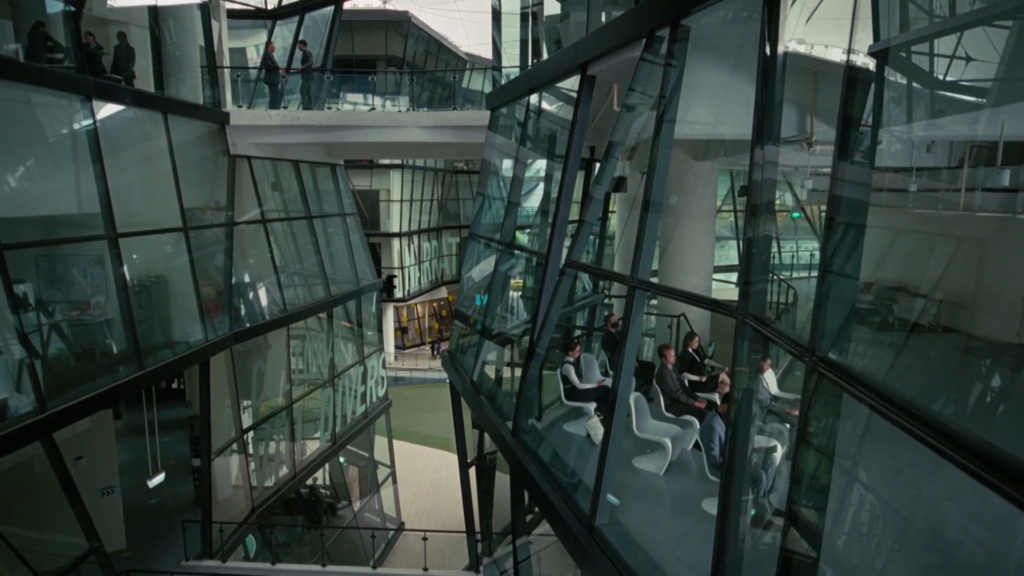
This is the McNally Campus of Lasalle, College of the Arts, here in Singapore. It’s a pretty building, all angular lines and geometric shapes with glassy exteriors, emblazoned with motivating buzzwords. You might recognize it in Westworld Season 3 as the headquarters of an unnamed corporation where Caleb Nichols, played by Aaron Paul, interviews for a job he ends up not getting.
Watching this season of Westworld as a Singaporean is an interesting exercise. You’re spending half the time following the story, and the other half is spent playing spot-the-landmark.
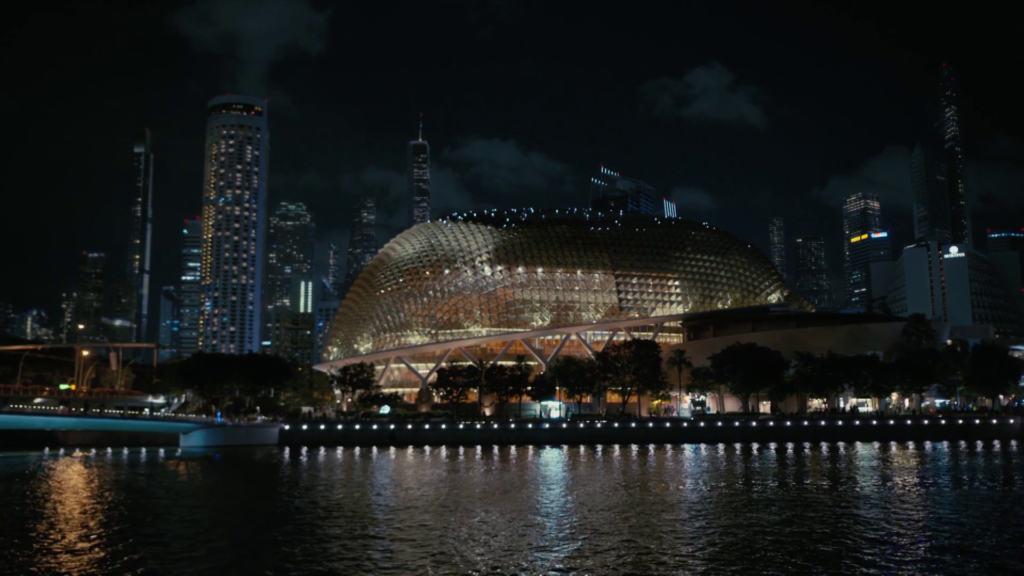
That’s Orchard Road. Hey that’s Stadium MRT Station. Look it’s the Esplanade. That’s Atlas Bar which isn’t inside the Esplanade.
My country was a major filming location for this season of Westworld, leading to the peculiar experience of watching famous actors wander about the places and landmarks that I and many other Singaporeans have been to. If you live in New York or LA this might be a common experience, but it’s rare for us, so let us indulge a bit.
It took me a while to realize that Singapore, for most scenes, isn’t actually playing Singapore in Westworld. Many of these Singaporean landmarks are portrayed as landmarks in a future Los Angeles. Sometimes shots filmed in Singapore cut to shots clearly not filmed in Singapore. This establishing shot, for instance, was filmed in Singapore. But it cuts to this scene in a diner and I don’t know of any diners in Singapore that look like this. Heck I don’t know of any realistic American Diners in Singapore. They’re not really a thing here.
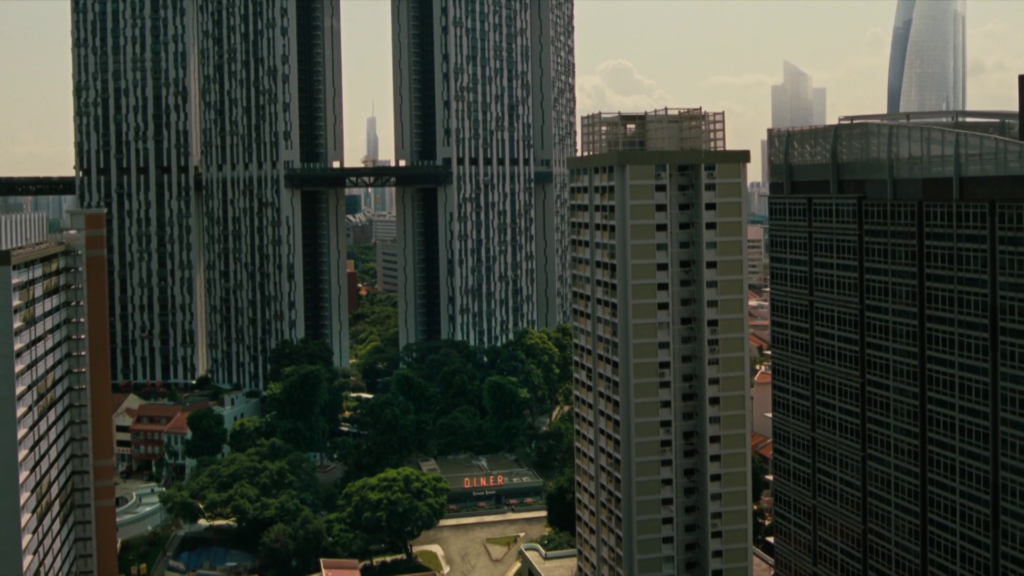
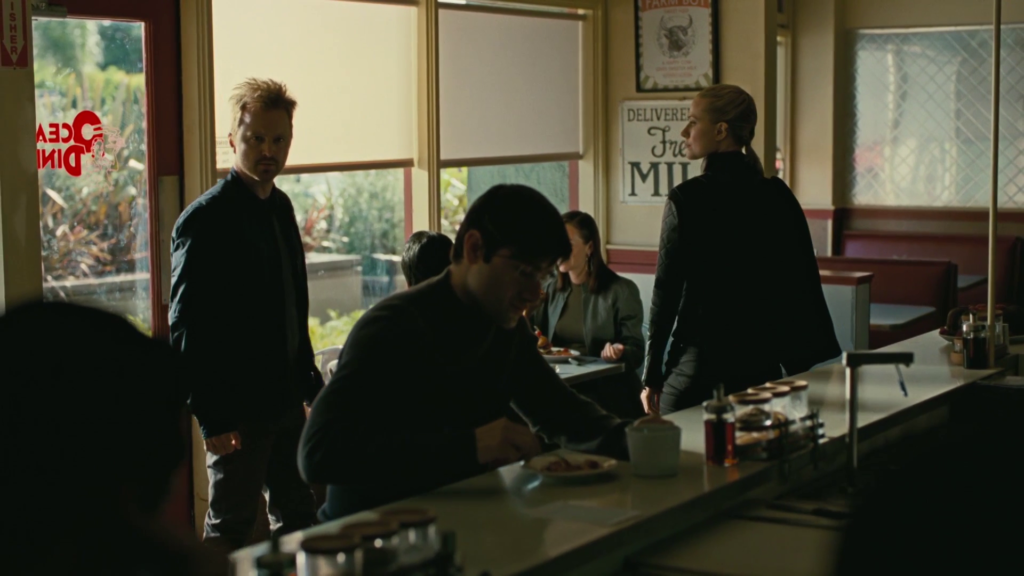
As I watched further though, there was something else that started niggling at me. These Singaporean landmarks we see in Westworld, they’re only really one side of Singapore. Singapore is a big city with a rich history, but in Westworld we only see the side that looks futuristic and contemporary and modern. There’s a reason why Westworld focuses on this aspect of Singapore’s cityscape, and that reason is rather interesting to think about.
Like all the other landmarks and buildings featured in Westworld, we see the McNally campus in isolation. We’re not shown the surrounding landscape, because if you did, it wouldn’t look so ‘futuristic’. Here’s what the surroundings of the McNally campus look like, for instance.
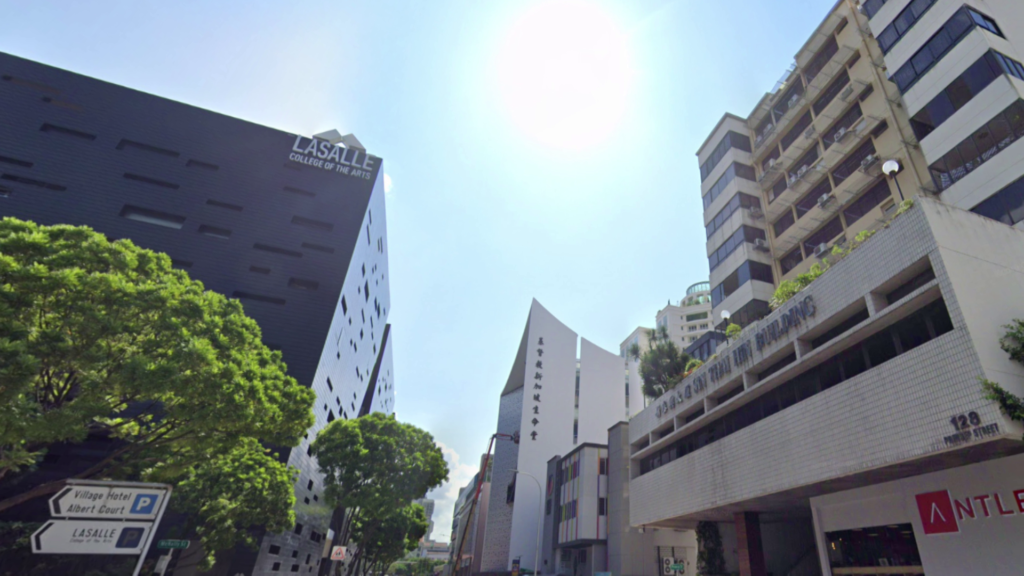
Singapore, unlike Westworld’s future LA, is a real lived-in city, complete with its own juxtapositions and contradictions. Instead, Westworld filters away aspects of Singapore it’s not interested in. We get certain peeks and glimpses, all to create a particular illusion. Future LA in Westworld is not a city per se, it’s an idea of a city, constructed with a particular aesthetic in order to convey one particular vision. The landmarks and places and landscapes in Singapore that don’t fit this vision? We simply don’t see them.
Lasalle’s McNally campus opened in 2009, having already won a string of architectural awards in the prior years. It was designed and conceived by the architectural firm RSP. While RSP is a primarily Singapore-based firm, it was founded by a British architect with the incredibly English name of Raglan Squire. Born in London 1912, Squire served with the Royal Engineers during World War II before helping set up the Royal Institute of British Architects’ Reconstruction Committee, contributing to the efforts to rebuild London following the Blitz during World War II. His reputation grew further with his work on the redevelopment of Eaton Square in London along with the Engineering College of Rangoon University and Nat Mauk Technical High School in Myanmar. He then founded RSP in Singapore in 1956, which would go on to transform Singapore’s cityscape with landmarks such as the National Archives, Changi Airport’s Jewel and Lasalle’s McNally campus.
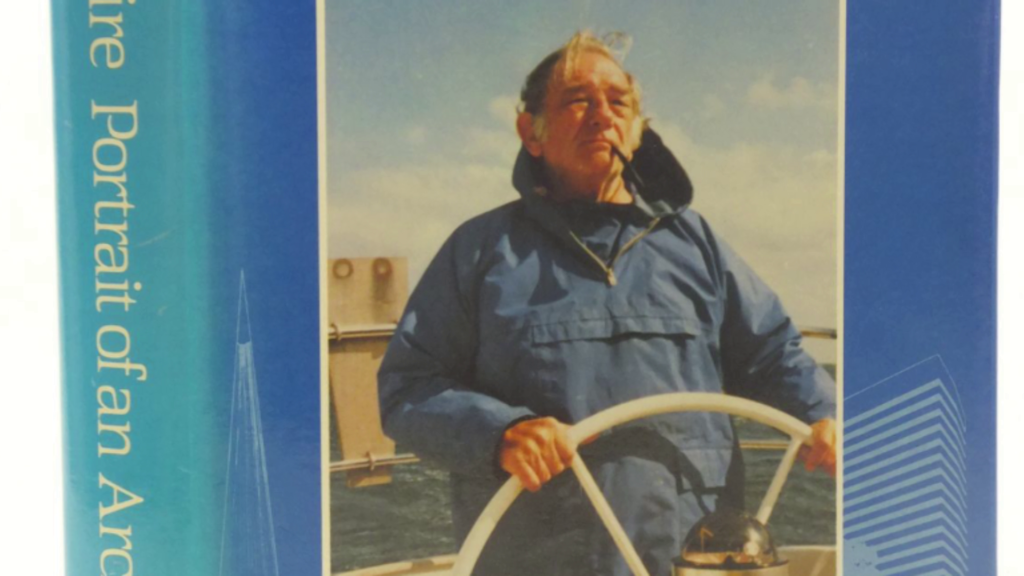
As extraordinary as Squire’s story is, it isn’t necessarily unique. There is a great demand in Singapore and in many other metropolitan cities for celebrity architects and their firms like Squire and his RSP. For instance, the Helix Bridge, another Singaporean landmark featured in Westworld, was co-designed by the Australian firm Cox Architecture, founded in 1964 by esteemed Australian architect Philip Cox.
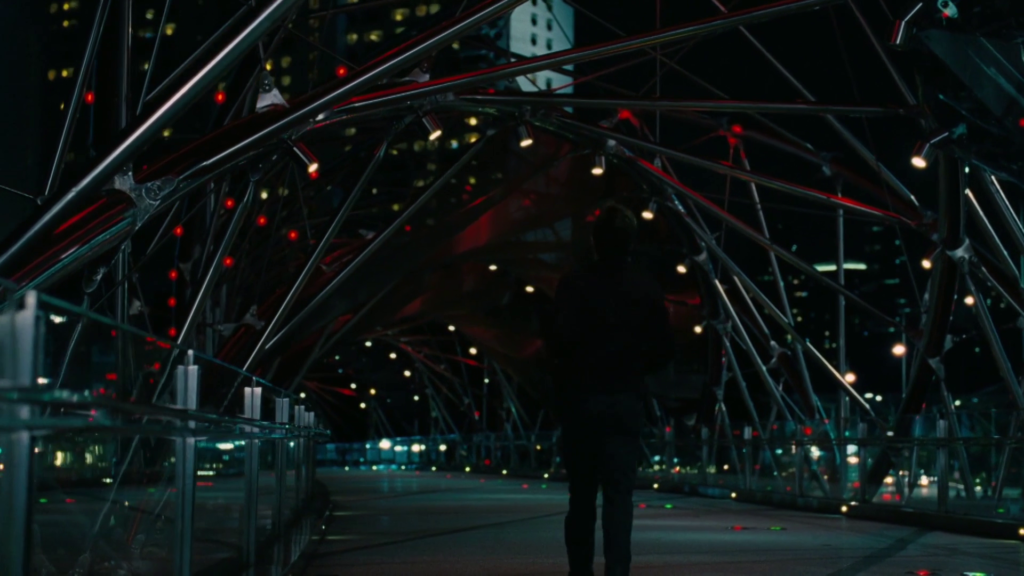
“Employing a famous architect is not only about adding design value, it is also about adding cachet, since individual architects have achieved a much greater measure of celebrity than in the past. In some cases, their names are so well-known to the public that they have achieved the status of brands. The questions are: How did branding come to architecture in the first place, and how much value does a big name architecturally add to a real estate project?”
Witold Rybczynski
Rybczynski answers the first question for us. Architects, like lawyers, accountants, Mandalorians and Witchers, are professional freelancers. Their income depends on the steady flow of work. If you can turn yourself into a brand, into an icon, then your work can go on to bring in even more work. Cultivate a style and a signature aesthetic, and corporations and city planners will chase you through the streets in the hopes of commissioning a work from you. Rybczynski cites the work of Frank Gehry, with examples like the Guggenheim Museum in Bilbao and the Disney Concert Hall in LA. His style is whimsical and quirky. The buildings look more like sculptures than buildings. He has carved a niche for himself and so if you wanted a whimsical building, you know who to call.
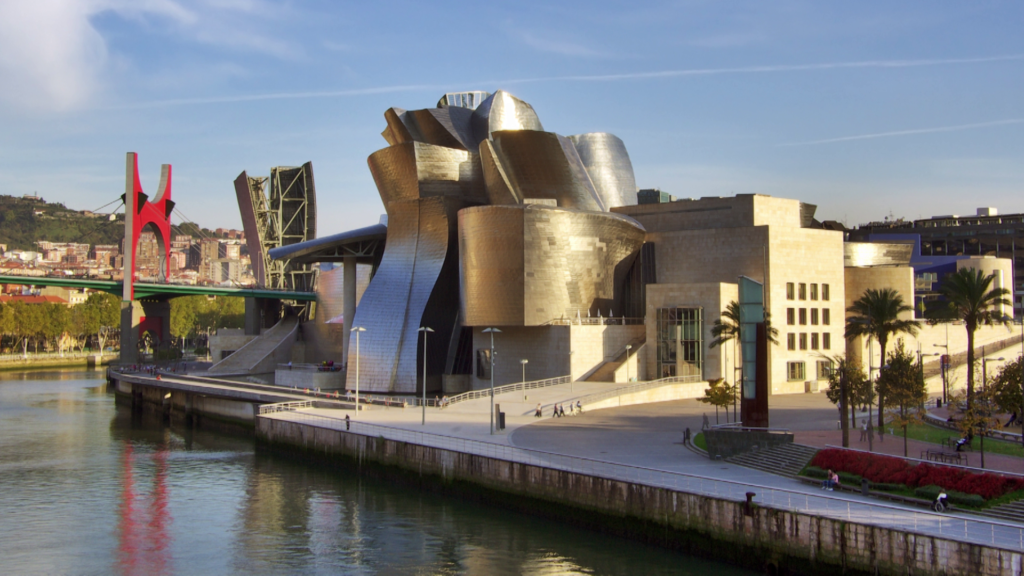
The second question, what value is added by a celebrity architect, is a little more complicated, but we might find some hint to the answer in the buzzwords on the glass windows of the McNally campus.
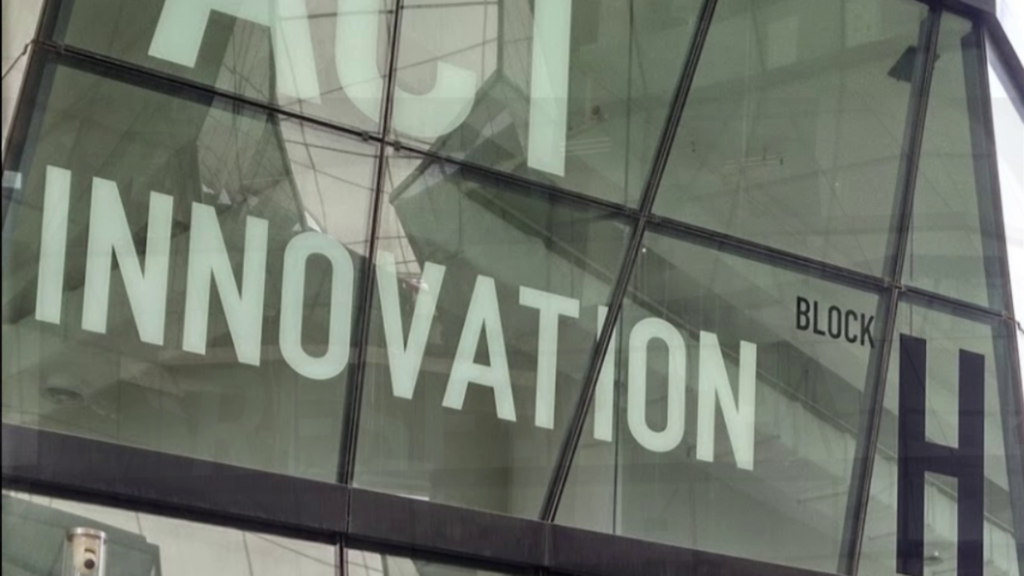
As a college of the arts, these buzzwords are ostensibly meant to inspire students, to spark creativity or to encourage experimentation. In Westworld, we see these buzzwords recontextualized. They’re not artistic buzzwords, but corporate buzzwords. They’re not directed at arts students, but instead at corporate employees and visitors. So what do these buzzwords now convey? What is their underlying message.
Paul Knox and Kathy Pain
“Cities have been broadly recast within a new political economy that is now dominated by neo-liberalism. Urban governance has become concerned more with providing a ‘good business climate’ than with the traditional concerns of civil society. A key part of providing a good business climate, for many of the globalizing cities in Europe, is the promotion of urban design, iconic architecture, and trendy cultural quarters.”
Singapore is no different in this regard. The rapid expansion and growth of our local economy is and was incredibly dependent on attracting wealthy investors and corporations to invest in Singapore and to set up business here. In 2018, Singapore experienced an inward flow of over 77 billion US Dollars. Labour laws are business friendly. There is no minimum wage law. Corporate tax rates are at a low 17%. Capital gains tax is non-existent. Famously, Facebook co-founder Eduardo Saverin, played by Andrew Garfield in The Social Network, renounced his US citizenship in 2011 and moved to Singapore, thereby avoiding over 700 million US Dollars in capital gains tax.
So we end up with buildings and landmarks that look like this. It’s contemporary, forward-looking. Innovative. Futuristic. These aesthetics convey connotations about the space, who controls it and who is invited to it. The sociologist Pierre Bourdieu proposed that all humans occupy a location in a social space, a map of our social relation with one other and with the physical spaces we inhabit. Where we are located in this social space is defined by the amount of capital we have, where capital could be wealth, status, celebrity. The more capital you have, the more esteemed and elite your position in the social space is, and the more freedom and access to physical spaces you have.
How does Caleb Nichols gain access to the private bank where Liam Dempsey parks his wealth? He dons an expensive tailored suit, a necessity to disguise himself as Dempsey’s wealth manager. To gain access to high status spaces, one must embody the aesthetics of high status. Aesthetics and the ideology they represent are fundamentally connected.
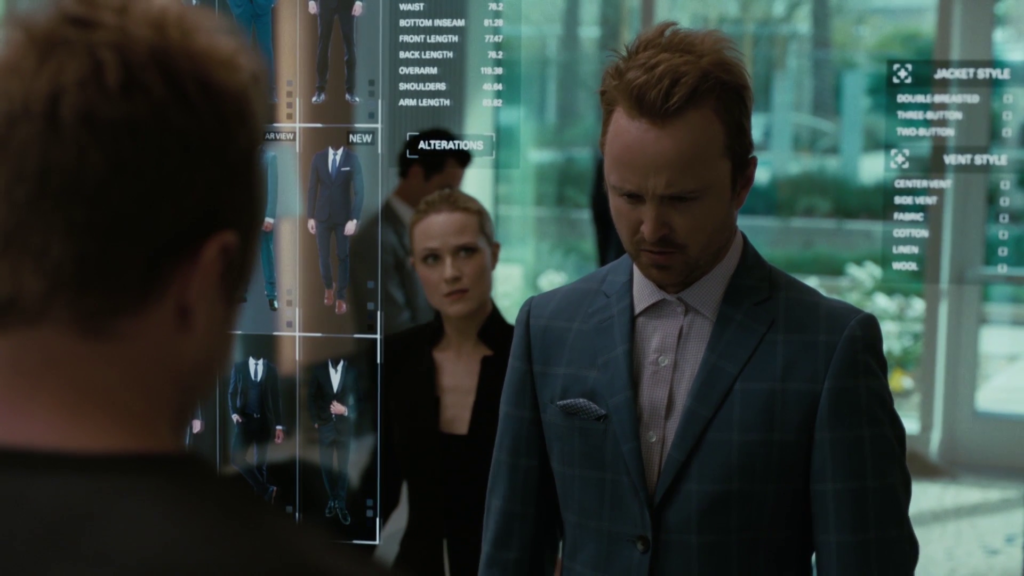
The aesthetics of the architecture and interiors we see in Westworld (and in reality) exist not just to please the eye. In fact, given the private and restricted nature of these spaces they only please certain eyes. Beyond that, they exist to convey a message: Are you wealthy? Are you a member of the global cultural or financial elite? Then welcome, make yourself at home. Invest in our cities. Invest in our economies. We will bend our laws for you. We will open our borders for you.
In the real world, these aesthetics are surgically constructed to attract the attention of high status individuals. In Westworld, the same aesthetics are used as critique. Contemporary architecture, opulent interior spaces; they conceal the dark secrets of predatory capitalism and its inherent corruption.
Here’s the thing though. It’s still pretty, isn’t it? You’d love to hang out in places like these wouldn’t you? You’d like to have drinks in a bar like this wouldn’t you?
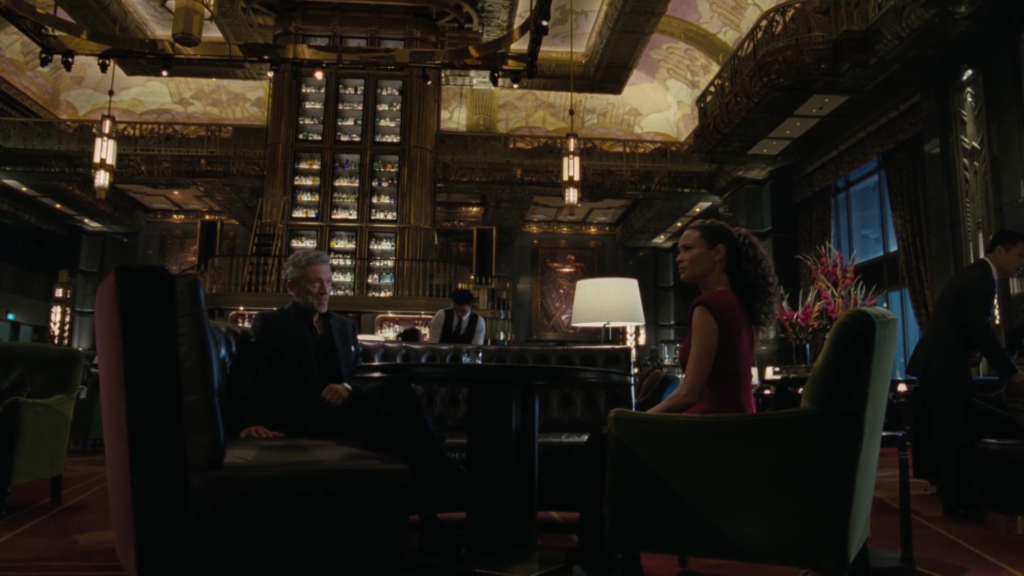
There’s a quote often attributed to French film maker Francois Truffaut, “There’s no such thing as an anti-war film”. The aesthetics of war films, the intensity, the heart-pounding action and brutality, enter your eye and drill deep down into the primal. Whatever the film might attempt to express thematically can only go so far as the rational and the logical mind. Never mind your philosophical musings of the cost of war. The whoosh of bullets past your head. The feel of cold steel against the palm of the hand. The guttural screams of your enemies. You feel alive.
Anthony Swofford, Jarhead
“The magic brutality of the films celebrates the terrible and despicable beauty of their fighting skills. Fight, rape, war, pillage, burn. Filmic images of death and carnage are pornography for the military man.”
Are then filmic images of opulence and modernity not pornography for the wealthy man? And under contemporary capitalism are we all not aspirational wealthy men, temporarily embarrassed millionaires? If these images are not invitations to us, we should aspire to be invited. Even as Westworld depicts modernity as a critique, the images are still seductive. Aesthetics may be fundamentally connected to the ideology they represent, but they aren’t necessarily connected to the critique of the ideology.
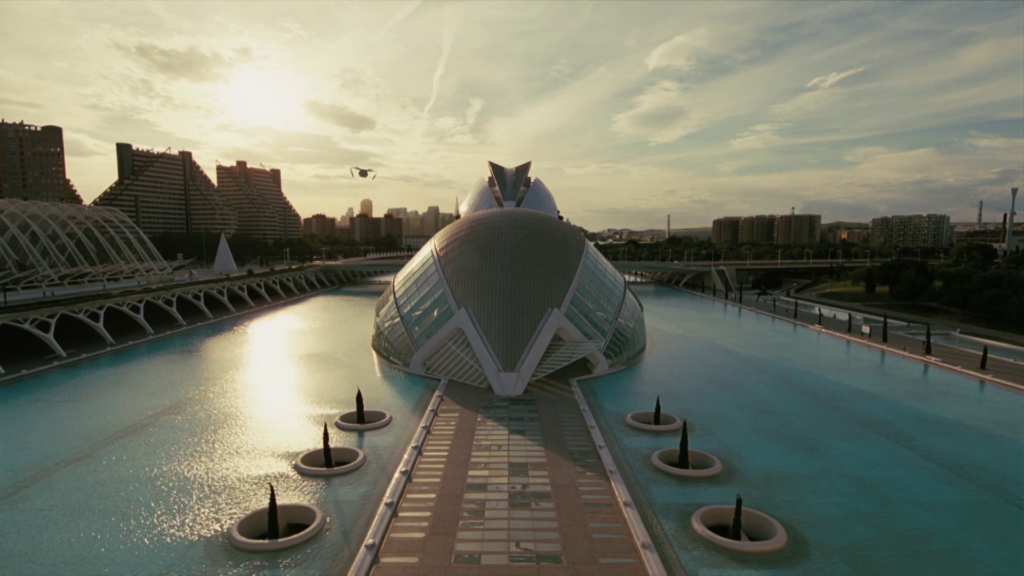
And of course it’s not just us. Architects, government officials and the wealthy elite the world over continue to be inspired by imagery just like this. And as they endeavor to bring these visions of cities to life in nations all over the world, the critique is often forgotten, but the ideology is not. As the cityscape is remade, so too are its policies. Neoliberal capitalism rises just as surely and as relentlessly as these contemporary cathedrals of glass.
So what if we want to really make some meaningful change? When it seems critiquing the status quo isn’t sufficient? Can we present an alternative? A vision of the future along a different trajectory? A vision of a city built for all humankind, rather than just the wealthy? In fact, Westworld offers us a very tiny glimpse of an alternative future.
Westworld has many establishing shots like these, many shot in Singapore. You see these buildings in the corner there? We never get a chance to see them up close. Well, here they are.
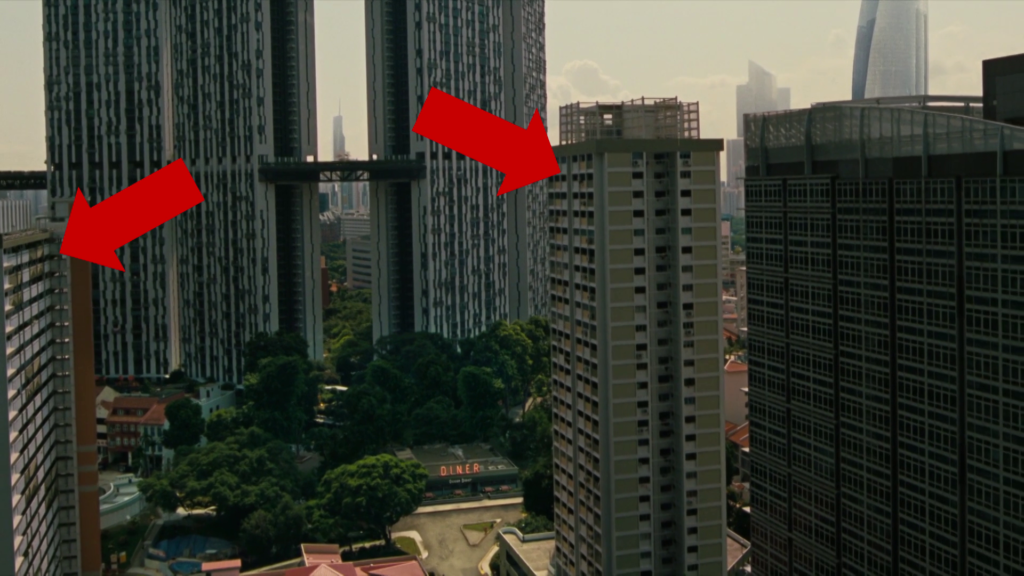
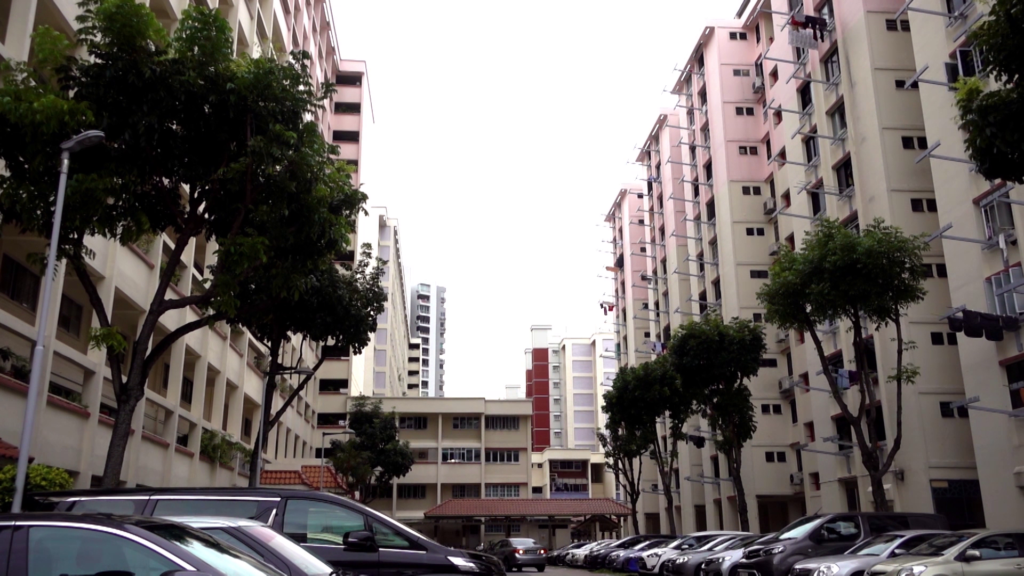
These are HDB Flats. HDB, or the Housing and Development Board, was set up by the government in 1960 shortly after receiving self-governance from the British. Singapore was in the grips of a severe housing crisis, exacerbated by damage from World War II. A British Housing Committee Report referred to slum-filled Singapore as a ‘disgrace to a civilized community’. The Board was tasked with the rapid construction and development of affordable public housing for the rapidly growing population. These high-rise flats were the result. They’ve utterly transformed the physical and economic landscape of Singapore. Over 90% of households own their own home. 80% of these are homes in these HDB flats.
They dot the landscape of Singapore. The nation is one of the densest in the world, and the combination of population density and land scarcity meant that we had to build upwards. They mirror the mega skyscrapers of modern capitalism in their climb to the skies, but their purpose is very different, and so too are their aesthetics. In a flat, all households are equal. Class hierarchies are not meant to be present here and so each individual home is largely uniform in size and structure. The flat becomes almost lego-like, as if made of modular pieces that could continue upwards ad infinitum. The diversity of cultures and ethnicities that can live in one flat mean that they must be aesthetically acceptable to all, so they are simple and coated in inoffensive bright pastel colours. Aesthetics reflect purpose. Aesthetics reflect ideology.
Suffice to say, this cityscape looks very different then the one we see in Westworld. This is not a criticism of Westworld. The show has its own themes and it depicts its world accordingly. Westworld shows one possibility, shown to us as a warning. But here is another possibility, that I’m showing as a possible ideal.
If we wanted to change the system of the world, maybe, just maybe, it might not be enough to merely critique it. Maybe we need to show an alternative vision. It’s not our obligation to show it, but hey, if no one is going to do it, we might as well be the ones to do it. We might as well show a different trajectory to a different future.
Here’s one such possibility. It may not look as futuristic or as awe-inspiring as what we see in Westworld, but it’s a start.
Bibliography:
RSP: https://rsp.sg/about/
Raglan Squire’s works in Myanmar: https://benbansal.me/?p=3042
Raglan Squire Bio: https://www.telegraph.co.uk/news/obituaries/1463377/Raglan-Squire.html
Architectural Branding by Witold Rybczynski: http://realestate.wharton.upenn.edu/wp-content/uploads/2017/03/575.pdf
Globalization, neoliberalism and international homogeneity in architecture and urban development by Paul Knox and Kathy Pain: https://www.bbsr.bund.de/BBSR/EN/Publications/IzR/2010/Download/DL_KnoxPain.pdf?_blob=publicationFile&v=2
Physical Space, Social Space and Habitus, Pierre Bourdieu: https://archives.library.illinois.edu/erec/University%20Archives/2401001/Production_website/pages/StewardingExcellence/Physical%20Space,%20Social%20Space%20and%20Habitus.pdf
Singapore home ownership stats: https://www.singstat.gov.sg/modules/infographics/-/media/Files/visualising_data/infographics/Population/singapore-population13022019
Jarhead: https://en.wikipedia.org/wiki/Jarhead(book)
HDB History: https://www.asiaone.com/singapore/he-proved-hdb-critics-wrong